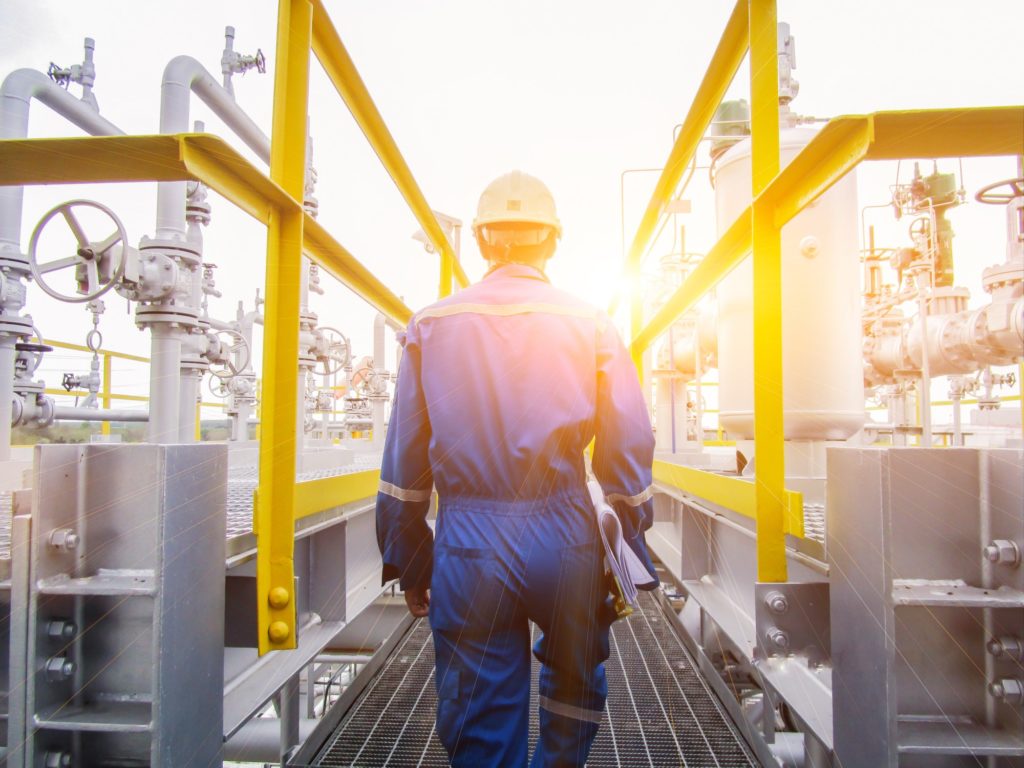
Many film fans remember the drama unfolding in the film There Will Be Blood. Its portrayal of the deadlock arguments between families and neighbors when it came to ‘oil-rich’ land. The film showed many shocking moments—including the final bowling alley scene that leaves the viewer a bit shaken. These events are dramatized, as they are based on a satire novel by Upton Sinclair. Still, the oil and gas industry certainly has a unique history full of larger-than-life figures, incredible engineering, and innovation. The need for energy is an important driving force for much of this inventiveness and progress, as they endeavor to make use of the earth’s incredible resources continues.
There is a lot that goes into oil drilling. Here at Wyler Industrial, we love everything that has to do with heavy-duty equipment and machines used in the industrial and manufacturing sectors. So, why not explore some of these super cool tools that help provide one of the most needed resources.
The Steam Engine Changes Everything
Indeed it does. The steam engine brings the transformation from agrarian to an industrial economy. Still, it also spearheads significant changes to specific industries, including production, manufacturing, and the transportation of goods via the steam engine, trains, steamships, and other machines powered by coal. As the population from many coal-burning plants ensued, many women’s groups and others lobbied to take this into account and reduce the smoke-filled air quality that was lingering above many inner-city neighborhoods.
Throughout history, there had been several discoveries into several oil reserves. The most notable ones that kickstarted the move into petroleum as a new energy source began in the late 1900s and early 20th century. Also, one of these first often-cited oil discoveries is the one that happened in Oil Creek, Pennsylvania, in 1959. Native American populations had known about crude oil in the region.
Change Is Happening
It wasn’t until George Bissell and Edwin L. Drake used an oil rig successfully on a site near Oil Creek in Titusville, Pennsylvania. With the help of a clever professor, they tested the substance and surmised it proved useful for many different uses, including illuminating oil. Exactly five minutes until the first significant wave of investors and interested parties came rolling in, looking for ways to get more of this.
Not too far away, in the Appalachian Basin, seeping oil drew some attention and encouraged many to pursue these leads. As the Civil War happened, the oil-producing region spread over much of western Pennsylvania, through New York State, and into parts of Ohio and Kentucky.
Other states had their notable oil contributions in the early 20th century. These include states like Oklahoma in Glenn Pool and, a few decades later, the East Texas oil field. As other technologies developed, like the electric lightbulb, and automobiles increased. The demand for more efficient production and energy sources rose. The immediate impact of oil was felt across the board. Overall, gasoline sales shot sky high. So, demand only kept growing as dependence and love for a mobile America grew bigger and bigger.
Then comes a major world conflict. The onset of World War I had a tremendous impact on the manufacturing and production of many goods across industrialized nations. The United States of America entered the war a few years late but still ramped up its military production.
The Fist Baron
We would be remiss without talking about the first major oil baron in the United States. John D. Rockefeller began his career in refining and formed the Standard Oil Company. By 1879, the company controlled 90% of the country’s reigning capacity, pipelines, and gathering systems. Many of these companies and major players’ history is another fascinating topic we’ll cover next time!
Just a Few Important Pieces of Equipment in the Industry
Wildcat drilling or exploratory drilling is the process of drilling for oil and natural gas.
Tank vessels: There two types used include storage tanks and gas condensers (pressure vessels). There are many different types of tank vessels used in the industry as well. Some of these can include
Heat exchangers: These types of vessels are known to transfer heat from one fluid to another. The type of heat exchanger used depends on the drilling system. Several different types exist, including shell and tube heat exchangers, plate heat exchangers, regenerative heat exchangers, and more.
Air coolers: These are important equipment in many industries, not just oil and gas. It absorbs heat from materials to be cooled and sent to where the materials need to go.
Evaporators: The evaporator is a device that turns a material that is liquid form into a gaseous state. There are several types as well, including natural/forced circulation evaporator, rising/falling film evaporator, and multiple-effect evaporator.
Here at Wyler Industrial, we work with several important industries. The oil and gas industry is just one of them. So, when it comes to serving and repairing industrial equipment, call a professional!
